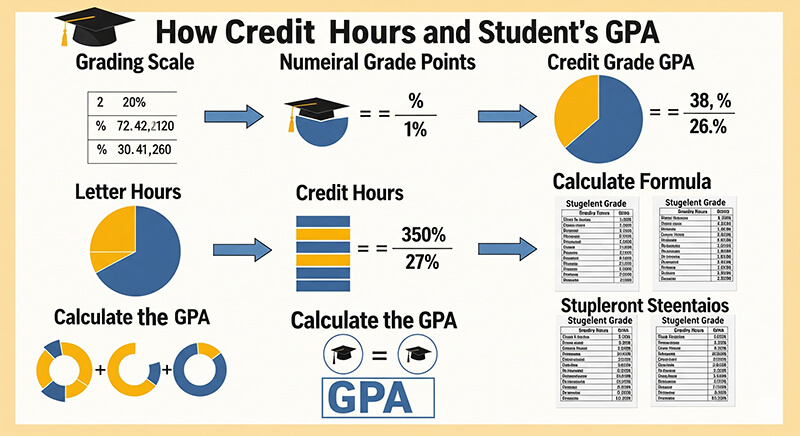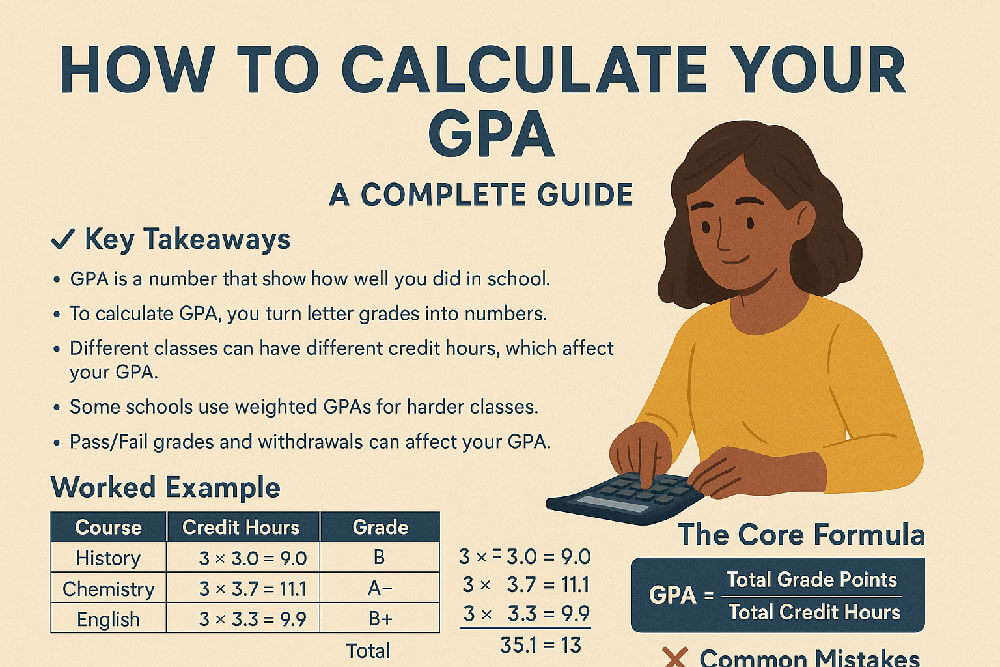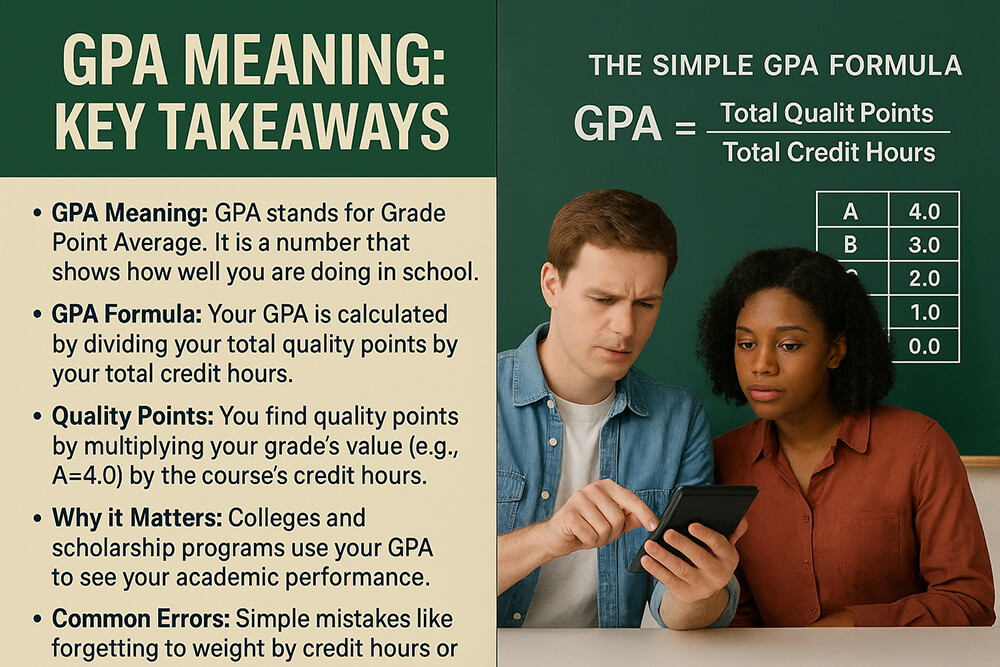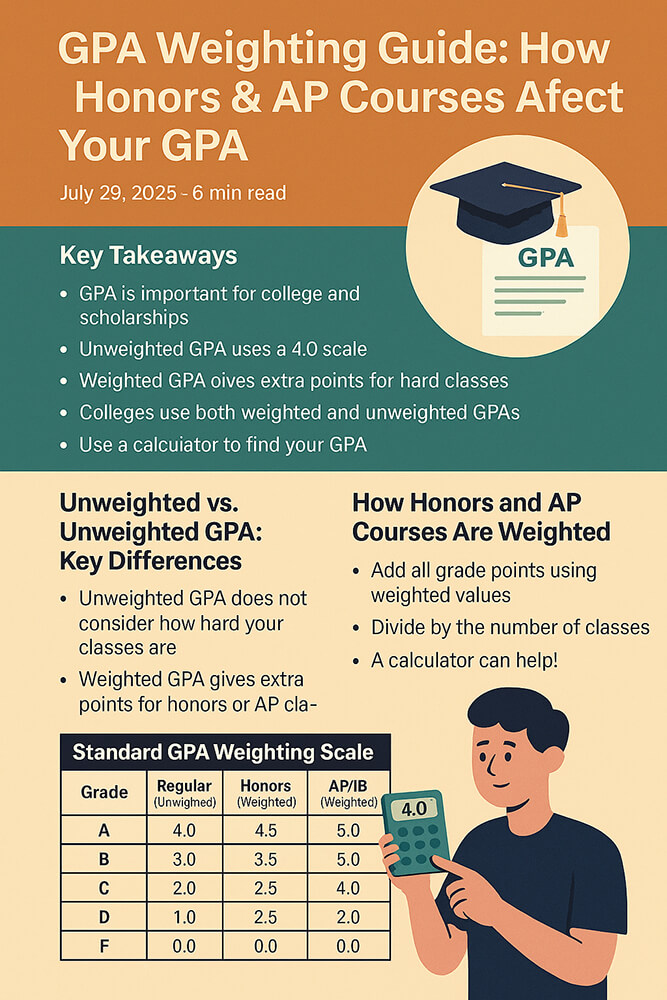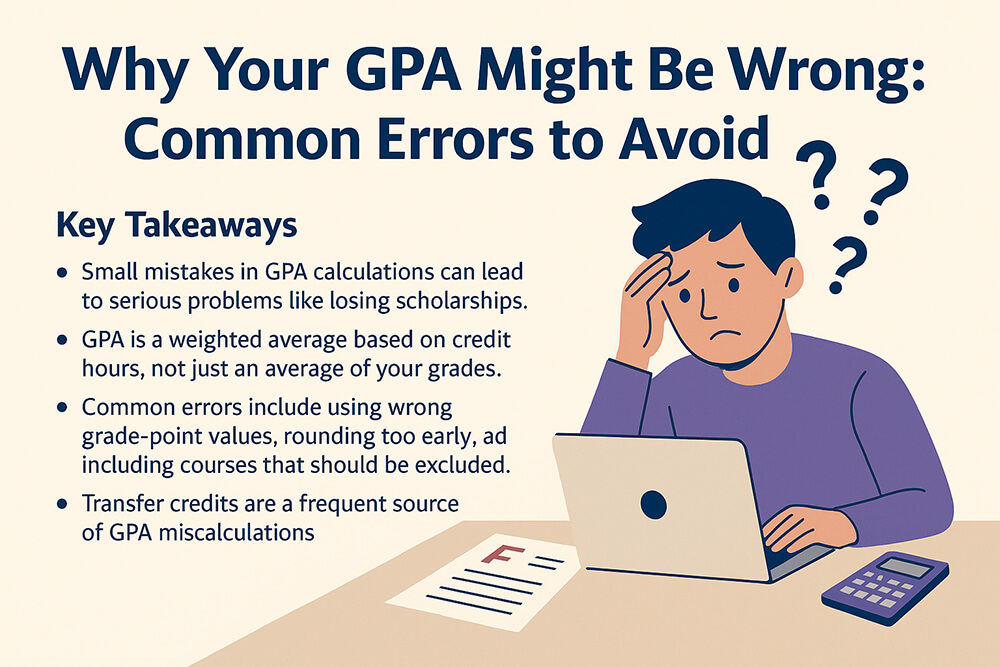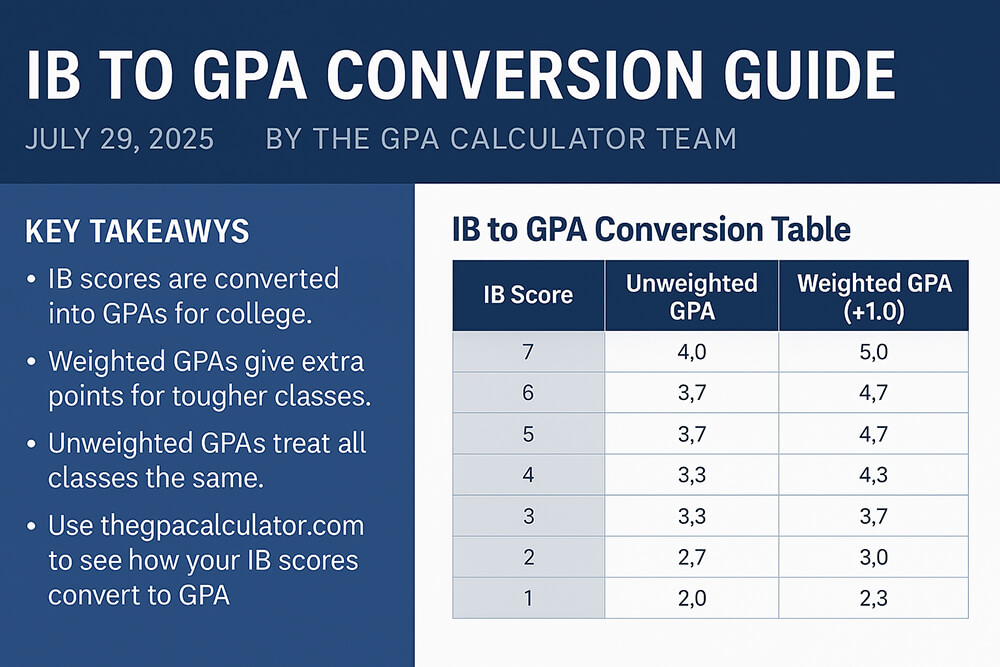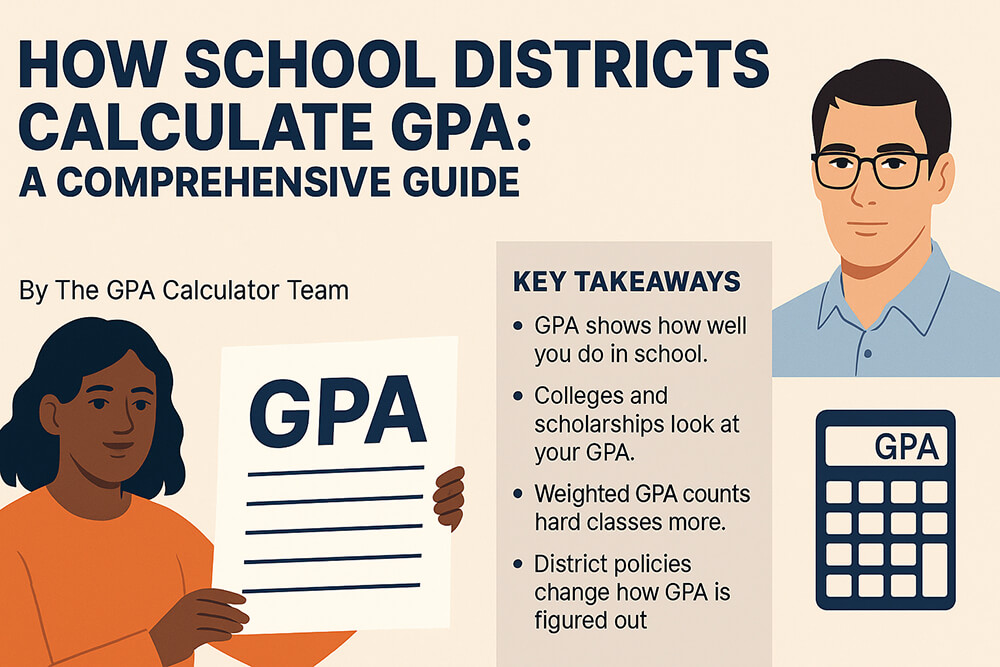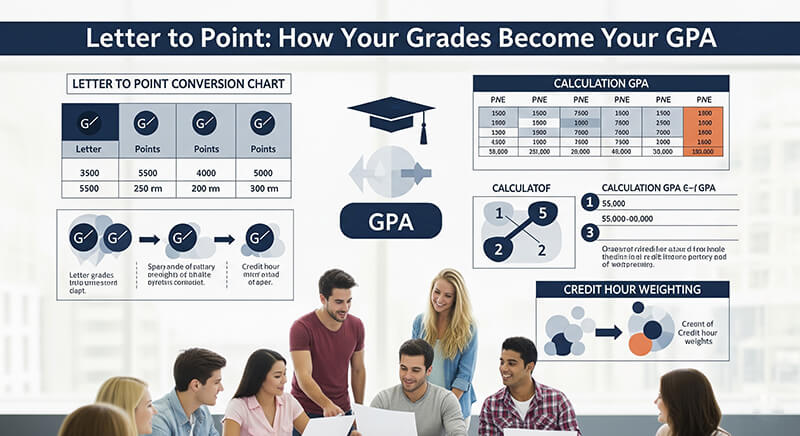Your Grade Point Average, or GPA, is a key number on your college application. It turns years of school work into a single score. But this number can be confusing. The confusion comes from one main question: What should a GPA show? Should it show just your grades, or should it also reward you for taking hard classes? This is the big difference between a weighted and an unweighted GPA.
Understanding this difference is important for any student applying to college. This guide explains both GPA systems. We will look at how to calculate them and how colleges use them. We will also clear up common myths. This will help you understand your own GPA and build a strong academic story.
Key Takeaways
| Feature | Unweighted GPA | Weighted GPA |
|---|---|---|
| Scale | Standard 4.0 scale. | Often a 5.0 scale, but can vary. |
| Course Difficulty | All classes are treated equally. | Harder classes (AP, IB, Honors) get extra points. |
| Maximum Value | Cannot be higher than 4.0. | Can be higher than 4.0. |
| Purpose | Shows your raw academic performance. | Shows performance while considering course rigor. |
| College View | Used as a baseline for comparison. | Shows you challenged yourself with a tough schedule. |
Understanding the GPA Basics
The main difference between weighted and unweighted GPA is about what is being measured. One system looks at pure performance. The other looks at the difficulty of the classes you took.
Unweighted GPA: The Standard Measure The unweighted GPA is the classic way to measure school performance. It uses a 4.0 scale. Every class is treated the same, no matter how hard it is. An 'A' in a regular English class is worth the same 4.0 points as an 'A' in an AP English class. The unweighted GPA gives a simple look at your grades. It answers the question: "How well did this student do in their classes?" A perfect unweighted GPA is a 4.0.
Weighted GPA: The Rigor Reward The weighted GPA is a system that rewards students for taking harder classes. It gives a "GPA bonus" for advanced courses like Honors, AP, or IB. This system gives more points for grades in tough classes. For example, an 'A' in a regular class is a 4.0, but an 'A' in an AP class might be a 5.0. This lets a student's GPA go above 4.0. It shows they took on a more difficult course load. A 'B' in a weighted class can equal an 'A' in a standard class.
How to Calculate Your GPA
Learning how to calculate your GPA helps you understand its complexity. The manual process shows why a precise tool is often better.
The GPA Formula Explained
Calculating your unweighted GPA is simple. You average your grades on a 4.0 scale.
Step 1: Convert Letter Grades to Points First, give a number value to each letter grade. A common scale is:
- A+ / A = 4.0
- A- = 3.7
- B+ = 3.3
- B = 3.0
- B- = 2.7
- C+ = 2.3
- C = 2.0
- C- = 1.7
- D+ = 1.3
- D = 1.0
- F = 0.0
Step 2: Add Up the Grade Points Add the points for all of your classes.
Step 3: Divide by the Number of Classes Divide the total points by the number of classes you took. The answer is your unweighted GPA.
Converting Letter Grades to Points
Let's see an example of an unweighted GPA calculation. A student took five classes:
- English: A (4.0)
- Algebra II: B (3.0)
- Biology: B- (2.7)
- U.S. History: A- (3.7)
- Spanish II: C+ (2.3)
Sum of Grade Points: 4.0 + 3.0 + 2.7 + 3.7 + 2.3 = 15.7 Number of Courses: 5 Unweighted GPA: 15.7 ÷ 5 = 3.14
What is a Weighted GPA?
Calculating a weighted GPA is similar but adds a step for course difficulty. The most common system adds a bonus for advanced classes. A popular model adds +0.5 for Honors and +1.0 for AP or IB courses.
A Guide to GPA Weighting for Honors and AP
Using this model, the grade point chart looks like this:
| Letter Grade | Standard GPA | Honors GPA | AP/IB GPA |
|---|---|---|---|
| A | 4.0 | 4.5 | 5.0 |
| B | 3.0 | 3.5 | 4.0 |
| C | 2.0 | 2.5 | 3.0 |
| D | 1.0 | 1.5 | 2.0 |
| F | 0.0 | 0.0 | 0.0 |
Now, look at a student with harder classes:
- Honors English: A (4.5)
- AP Calculus: B (4.0)
- AP Biology: B- (3.7)
- U.S. History: A- (3.7)
- Honors Spanish III: C+ (2.8)
Sum of Weighted Grade Points: 4.5 + 4.0 + 3.7 + 3.7 + 2.8 = 18.7 Number of Courses: 5 Weighted GPA: 18.7 ÷ 5 = 3.74
Quality Points vs. GPA
Some school districts, like the Houston Independent School District (HISD), use the term "Quality Points" for weighted grades. Regular courses use a 4.0 scale. "Quality Courses," such as Pre-AP, AP, and Dual Credit, use a 5.0 scale. An 'A' in a quality course is worth 5 points, a 'B' is 4 points, and so on. This is just another way to describe a weighted GPA system.
Common Mistakes in GPA Calculation
The biggest warning is that weighting systems are not universal. High schools use many different scales. Some use a 4.5 scale, others a 6.0 scale, and some go even higher. This lack of a national standard makes manual calculations risky. A generic model might not match the GPA on your official transcript.
Forgetting Credit Hour Weighting
Another common error is ignoring credit hours. Some calculations must account for the number of credits each course is worth. A year-long, 1.0 credit class has more impact on your GPA than a semester-long, 0.5 credit class. You cannot just average your GPA from each year, because the number of classes and credits may change. These details show why a reliable GPA calculator is so valuable.
Special Case: IB to GPA Conversion
For students in the International Baccalaureate (IB) program, GPA confusion is even greater. The IB Diploma uses a unique score that does not easily convert to a U.S. GPA.
The IB program is scored on a 45-point scale. The International Baccalaureate Organization does not have an official conversion chart to the U.S. 4.0 GPA scale. This is because every U.S. university has its own method for evaluating IB scores. The value of an IB score can change a lot from one college to another. The real value of the IB Diploma is its reputation as a difficult and respected program.
How Different School Districts Calculate GPA
The idea of a "standard" GPA is not real. A student's weighted GPA often depends on their school district. This creates a system of GPAs that are hard to compare.
- New York City: Allows individual schools to set their own weighting policies. This creates a fractured system where the same grade in the same AP course can have different values.
- Los Angeles: Students have two GPAs. One is for class rank, and a different, higher one is for UC/CSU college applications.
- Chicago: Uses a rigid, tiered system. Regular courses are on a 4.0 scale, Honors on a 5.0 scale, and AP/IB courses on a huge 6.0 scale.
- Houston: Uses a straightforward 5.0 scale for advanced "Quality Courses," including AP and Dual Credit.
This wide variation is why colleges must recalculate GPAs to compare applicants fairly.
The Problem of GPA Inflation
A major issue that affects the meaning of a high GPA is grade inflation. For years, average high school GPAs have been rising. But national test scores have stayed flat or gone down. This trend has big effects on college admissions.
The evidence for grade inflation is clear. The average GPA for students who took the ACT went from 3.17 in 2010 to 3.36 in 2021. During the same time, average ACT scores fell. This gap makes GPA a less reliable measure of what a student has learned. When more than half of students have an 'A' average, the 'A' grade loses its power to make applicants stand out.
Do Colleges Prefer Weighted or Unweighted GPA?
Colleges do not have a preference for weighted or unweighted GPAs. They are trained to understand different grading systems. To create a fair comparison, many colleges recalculate every applicant's GPA with their own formula.
This process usually involves:
- Focusing on Core Academics: They look at grades in English, math, science, social studies, and foreign language.
- Removing Local Weighting: The college ignores the high school's specific weighting system.
- Standardizing the Scale: They convert all grades to a standard, unweighted 4.0 scale first. Then, they may apply their own uniform weight for advanced courses.
Admissions officers care most about course rigor. A high GPA is not enough. They want to see a high GPA earned in the hardest curriculum available at your school.
Common Weighted GPA Myths
Many myths exist about GPAs. This can lead to bad choices.
Myth 1: A 4.2 weighted GPA is always better than a 4.0 unweighted GPA. Not true. Colleges look at the actual grades. A 4.0 unweighted GPA with all 'A's in AP classes is more impressive than a 4.2 weighted GPA with some 'B's.
Myth 2: It's better to get a 'C' in an AP class than an 'A' in a regular class. This is a risky plan. A 'C' is a red flag that you were overwhelmed. A 'B' in an AP class is often seen as better than an 'A' in a regular class, but a 'C' suggests you did not master the material.
Myth 3: My school's huge weighting gives me a big advantage. It might not. Some colleges will not add their own weight if they see the high school has already added a lot. This can sometimes result in a lower recalculated GPA.
How Pass/Fail Grades Impact GPA
Pass/Fail courses typically do not factor into your GPA calculation. A "Pass" grade earns you credit for the course but does not have a grade point value to be averaged in. However, a "Fail" grade is often treated as an 'F' and will be factored into your GPA as a 0.0, which can significantly lower your average. Policies can vary, so it is important to check with your specific school.
Conclusion: Take Control of Your Academic Story
The world of GPA is complex. The numbers on your transcript are not set in stone. They are shaped by local school policies and national trends.
The key lessons are clear:
- GPA is not a standard number.
- Course rigor is the most important factor for selective colleges.
- Colleges recalculate your GPA using their own rules.
- Grade inflation means a high GPA is expected, not special.
Understanding these rules helps you focus on what matters. Build a transcript that shows ambition and success. Your goal is not to trick the system. It is to create an academic record so strong it shines through any calculation method.
Frequently Asked Questions (FAQ)
Is a weighted GPA better than an unweighted GPA? Neither is better. Colleges look at both. An unweighted GPA shows your raw performance, while a weighted GPA shows if you took challenging classes. Admissions officers look at your transcript to see the whole story, including the difficulty of your courses.
How do colleges recalculate GPA? Many colleges recalculate GPA to compare all students fairly. They usually focus on core academic subjects, remove the high school's specific weighting, and convert everything to a standard 4.0 scale. After that, they may apply their own weighting for advanced courses.
Should I take an AP class if I might get a C? This is generally not a good idea. While colleges want to see you challenge yourself, a 'C' can signal that the material was too difficult for you. It is usually better to take the hardest classes where you can earn an 'A' or a 'B'.

